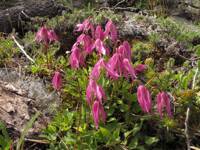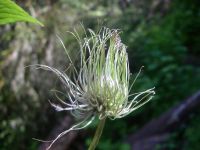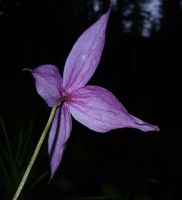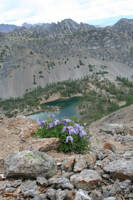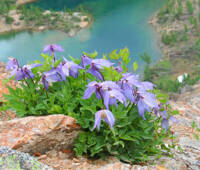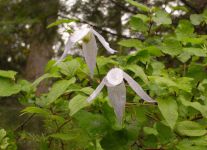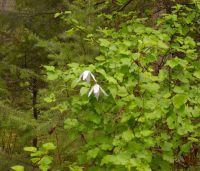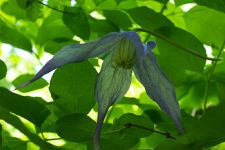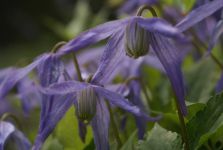Distribution: Occurring east of the Cascades crest in Washington; British Columbia to Oregon, east to Saskatchewan and Wyoming.
Habitat: Often in deep, fine soils in shady forest, also in cliffs and other rocky sites in open woods and thickets, at moderate to high elevations in the mountains.
Flowers: May-July
Origin: Native
Growth Duration: Perennial
Conservation Status: Not of concern
Pollination: Bumblebees, bees, flies
Soft-hairy or sparsely woolly perennials with creeping or climbing, slender stems; plants scarcely viny in var. dissecta, found in the Wenatchee Mountains of Washington.
Leaves opposite, ternate, firm but not succulent, the leaflets lance-ovate to triangular or sub-orbicular, lobed or unlobed, the margins entire or toothed.
Flowers solitary, terminal on short axillary branches on naked peduncles 5-15 cm. long; sepals usually 4, ovate-lanceolate to elliptic-oblong, acuminate, 3.5-6 cm. long, violet-blue to pale blue; petals none; stamens numerous, the outer ones often sterile; styles 3-6 cm. long, plumose, persistent.
Achenes short-pubescent.
Publication: Prodr. 1: 10. 1824.
-
var. dissecta – Columbia clematis
 Endemic to Wenatchee Mountains and nearby ranges, Chelan, Kittitas, Okanogan Counties, Washington.
Endemic to Wenatchee Mountains and nearby ranges, Chelan, Kittitas, Okanogan Counties, Washington. -
var. grosseserrata – Columbia clematis
 East of the Cascades in Washington; Yukon Territory to Colorado.
East of the Cascades in Washington; Yukon Territory to Colorado.
PNW Herbaria: Specimen records of Clematis occidentalis in the Consortium of Pacific Northwest Herbaria database
WA Flora Checklist: Clematis occidentalis checklist entry
OregonFlora: Clematis occidentalis information
E-Flora BC: Clematis occidentalis atlas page
CalPhotos: Clematis occidentalis photos





